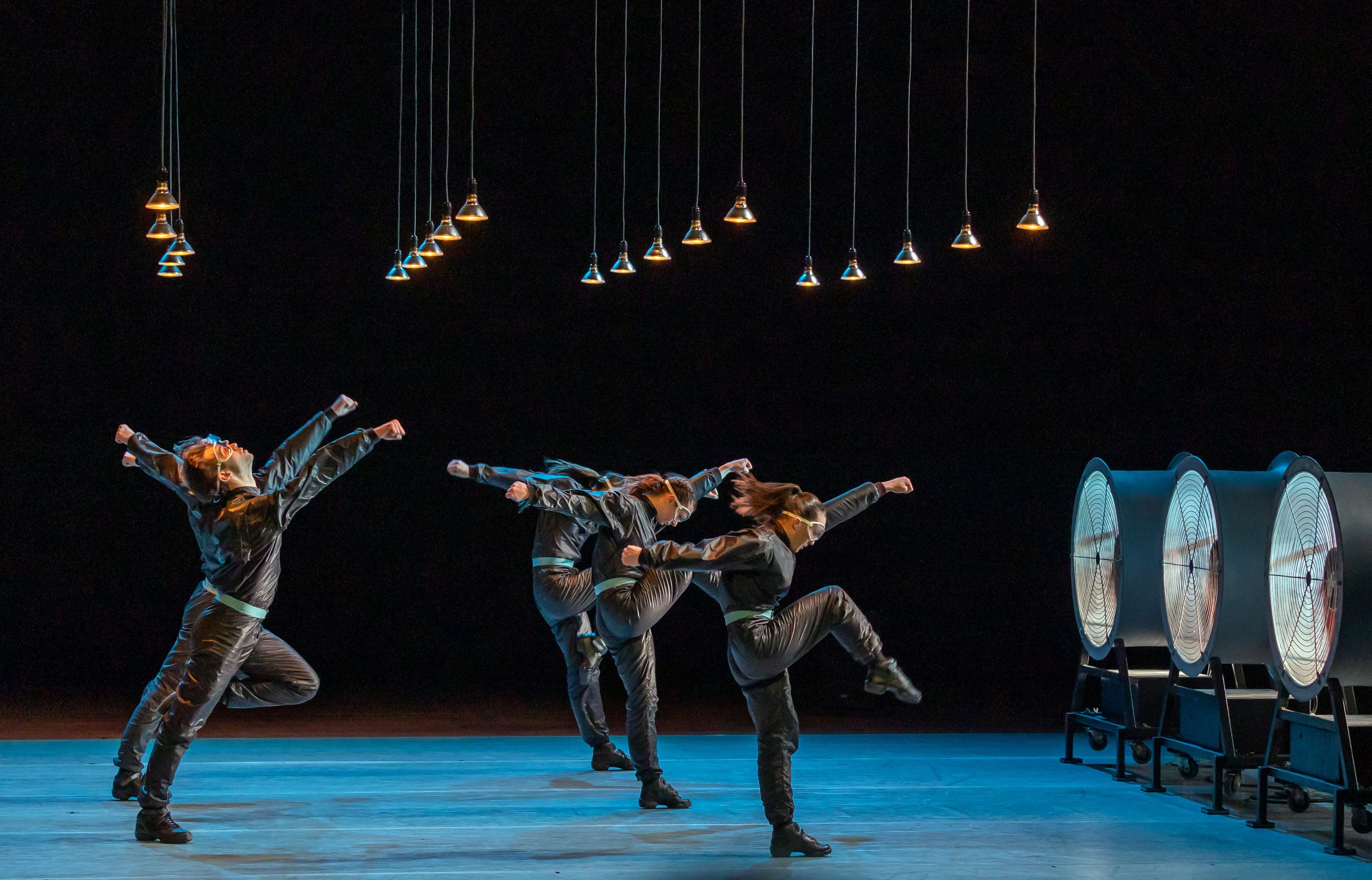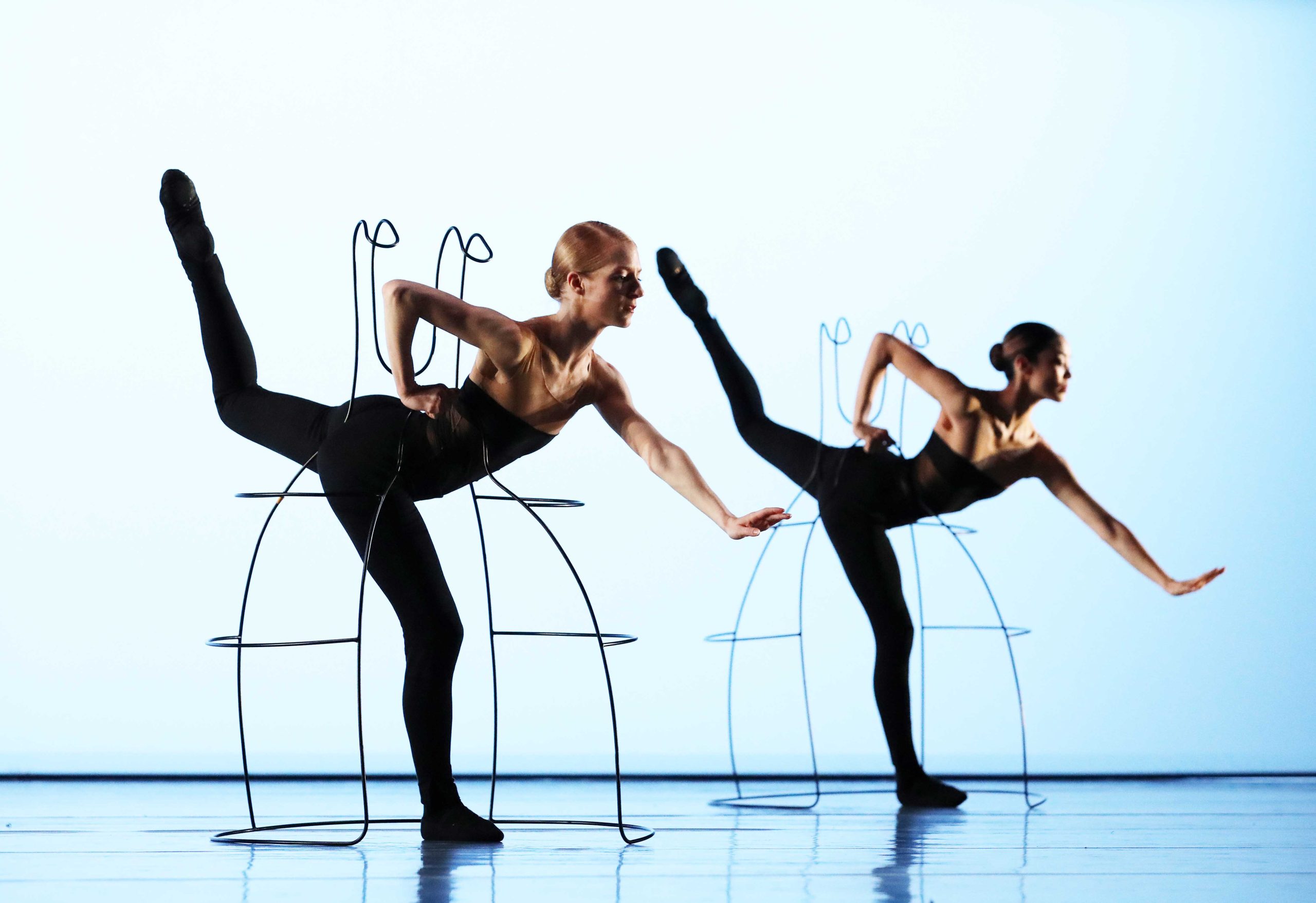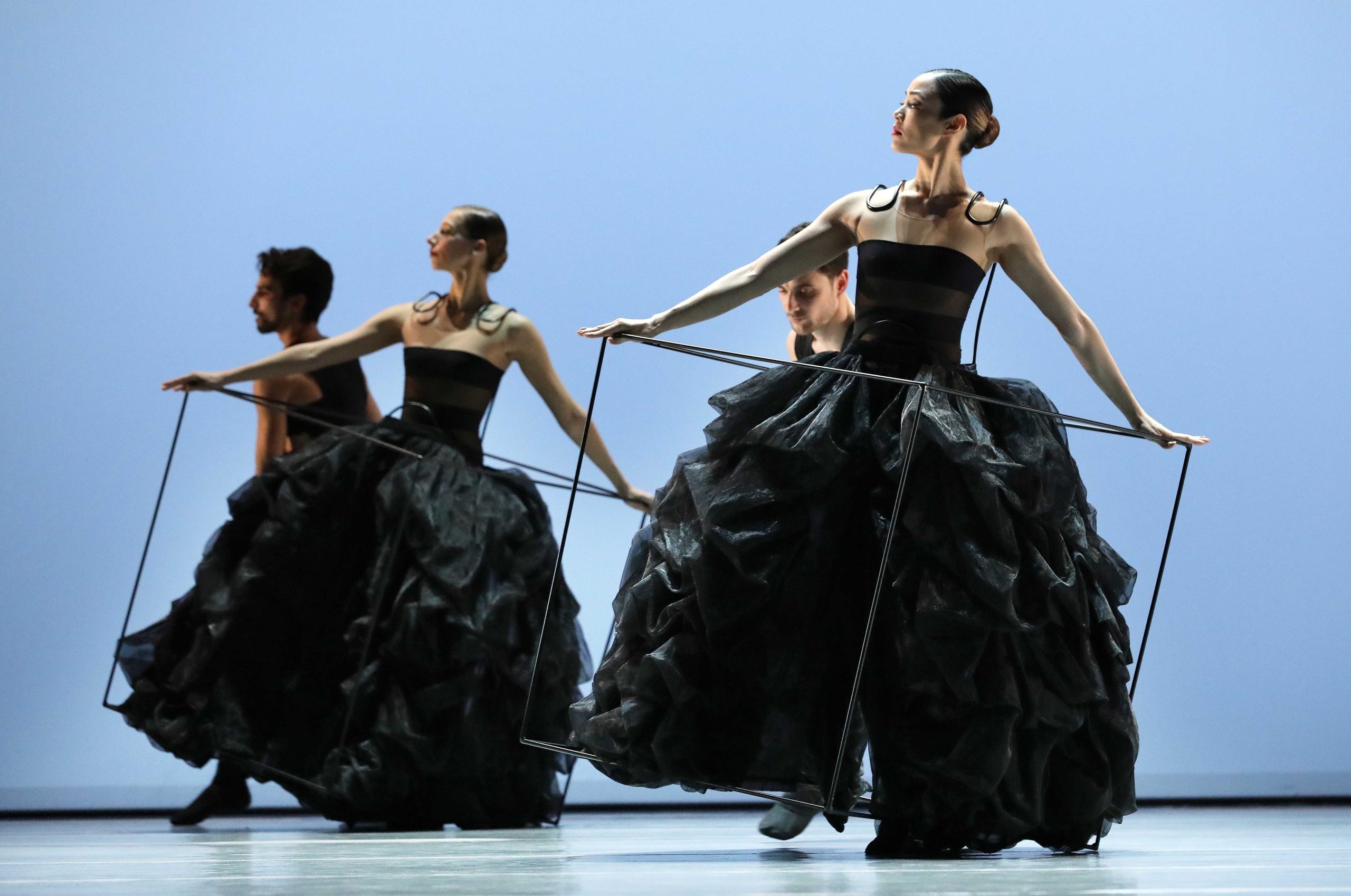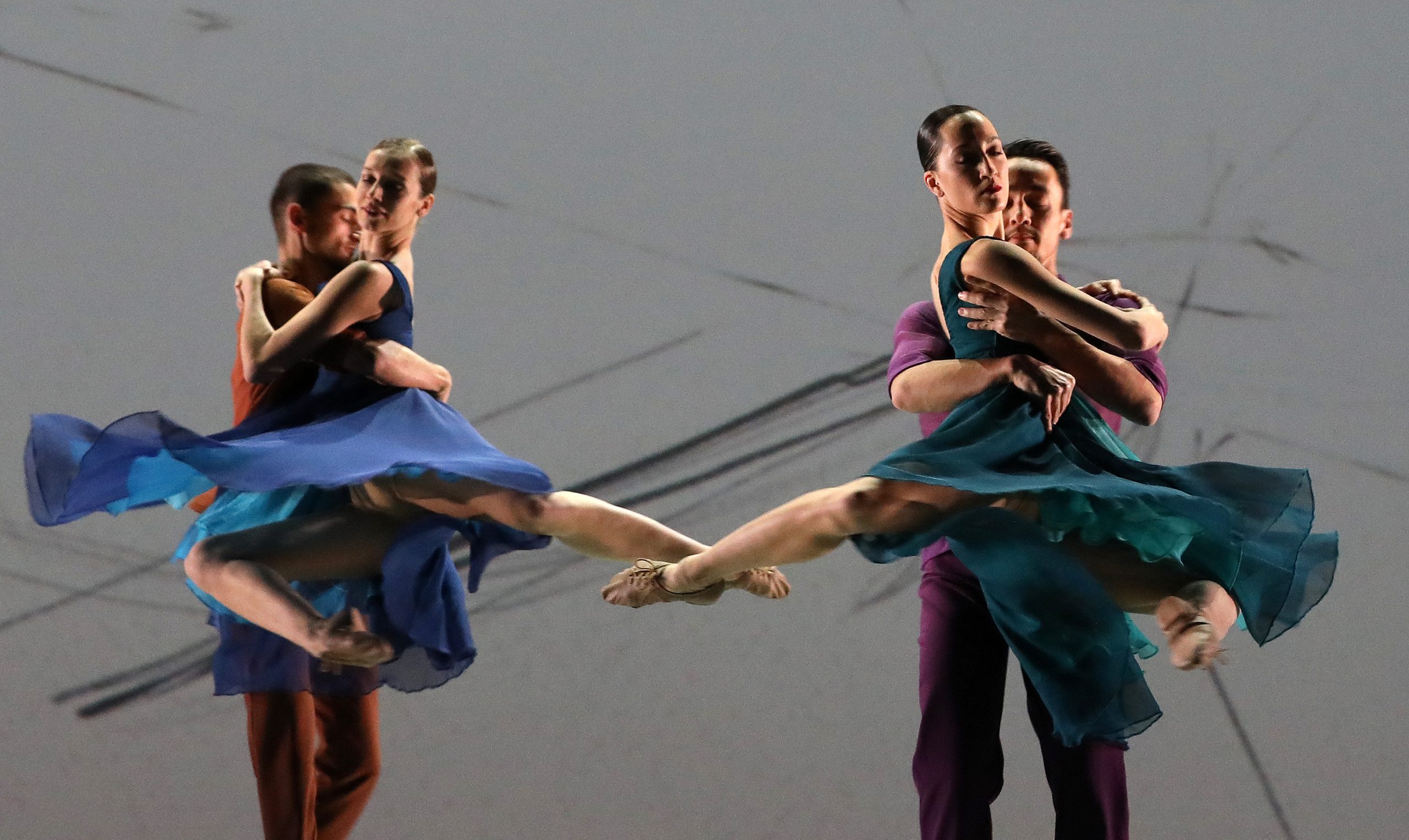Interview in de Volkskrant: Two dance icons on the challenges of minimal dance.
February 20, 2025
By: Annette Embrechts
In Arnhem, the Introdans studio is filled with the infamous counting schemes of American choreographer Lucinda Childs (84). Indecipherable for laypeople, but for the dancers, they will soon be the only lifeline—besides the repetitive music—when they tour seventeen theaters this spring with five choreographies from the renowned oeuvre of this queen of minimal dance.
No storyline, theme, or meaning to fall back on. Pure movement without frills, with seemingly endless sequences full of hypnotic shifts, composed by Childs with mathematical precision to musical compositions. Or sometimes, as in Interior Drama (1977) from her avant-garde period, set to silence. Hence the relentless counting.
Maddening Rhythms
Even in her new work, Notes of Longing, set to the composition of the same name by Dutch pianist Matteo Myderwyk (35), which the 84-year-old Childs is creating for the Arnhem-based company in the coming weeks, she will lead the Introdans dancers into maddening rhythms, sudden turns, light jumps, rapid bends, and short hops. Now that Introdans has studied ten of Childs’ works over twenty years, the dancers know that even a brief gasp for air can be disastrous—losing count is not an option.
But, says Childs—one day after arriving in Arnhem from New York and an hour before she steps into the studio, counting once again—“of course, I teach them how to help each other. It’s a collective dance performance. Backstage, dancers count on their fingers. They listen to the music and guide each other onto the floor at the right moment, in the correct alignment. When it goes well.”
That’s why Childs always choreographs in pairs that execute movements synchronously within a group. She calls this “doubling.” “That way, dancers feel less alone.”

Exhausting Counting Devil
In addition to the five-part Icoon, Introdans is presenting yet another exhausting counting devil this spring. Starting Saturday, Typhoon (1986), a classic by Dutch-Hungarian choreographer Krisztina de Châtel (82), will take the stage. De Châtel made dance history as the Dutch queen of minimal dance, with performances where dancers face off against earthen walls, glass cylinders, steel spheres, and glowing tubes. Or, as in Typhoon, against three wind machines—brought from the agricultural world, where they dry onions and potatoes, into the theater by visual artist Peter Vermeulen.
De Châtel choreographed Typhoon to Canto Ostinato by composer Simeon ten Holt, one of the most beloved works in Dutch minimal music. A decade ago, Childs created her first choreography for Introdans to this same famous repetitive composition.
Though these celebrated women belong to the same generation and movement—despite clear differences in their movement language—they will meet for the first time this Saturday at the Introdans premiere of Typhoon in Amsterdam. De Châtel: “I saw Lucinda’s incredible solo in Einstein on the Beach, the famous 1976 opera by Philip Glass and Robert Wilson. She repeated five steps forward, five steps back along a diagonal—a minimalist masterpiece, while also reciting a text about a supermarket.”
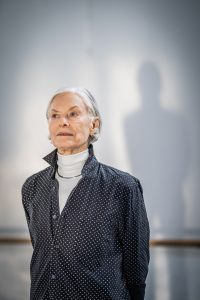
No Hiding Mistakes
This first collaboration with Glass and Wilson pulled Childs away from her revolutionary early years at the avant-garde Judson Dance Theater, where, influenced by composer John Cage and choreographer Merce Cunningham, she experimented with improvisations using everyday objects like sponges and socks and elevated ordinary movements such as walking into movement art. Childs has never seen De Châtel’s work before but can fully relate to her statement: “If someone makes a single mistake, everything collapses like a pudding. There’s no hiding it.”
Having played piano for years, Childs developed a repetitive, upward-flowing, musical dance language that, with its light jumps and skips, appears deceptively airy. De Châtel, with her Eastern European background as a former top athlete in Olympic gymnastics and rhythmic gymnastics, specialized in more robust, almost militaristic endurance tests, often performed with clenched fists. Both have achieved success working with renowned visual artists—Childs with Sol LeWitt (Dance, 1979) and De Châtel with Conrad van de Ven (Föld, 1985).
Heritage
These two women in their eighties share something else: neither has a partner or children to manage their artistic heritage in the future. De Châtel has entrusted the rights to her work to Stichting Imperium, through which she also supports young talent. Childs receives backing from the French archival arts center Centre national de la danse and has established her own foundation, managed by former dancers, répétiteurs, and her niece Ruth Childs (a dancer in Switzerland and the daughter of her brother).
Both understand the importance of passing down choreography live and firsthand to a new cast. A single misplaced breath—something imperceptible in a video recording—is something a dancer learns only through direct experience. That’s why they invest in former dancers as répétiteurs, ensuring their work is studied and performed with absolute precision. However, they have noticed a lack of young choreographers stepping into the minimal dance movement.
De Châtel mentions talents like Jan Martens (41) and Courtney May Robertson (32), while Childs references American performer Elizabeth Streb, though she is already 74. Both suspect that today’s young artists use expressive choreography to make political and thematic statements on issues such as (gender) inequality, identity, climate, and heritage—subjects that don’t align easily with minimal dance.
Yet, Childs, who stays in shape with daily routines of Pilates, yoga, tai chi, and basic ballet exercises, believes the timeless nature of their choreographies will eventually inspire new generations. “I’ve been invited to create an opera in Nice this year, set to music by Glass. And in 2026, I’ll be working on a major project in Paris.” Then, she picks up her folder filled with counting schemes. “They may look like just numbers and patterns,” she adds, “but what dancers feel when performing—that’s what truly matters.”
What is Minimal Dance?
In minimal dance (or minimalist dance), everything revolves around the continuous repetition of movement patterns with subtle shifts. The style emerged as part of the postmodern dance movement in the 1960s and 1970s. Choreographies focus purely on movement constructions themselves, without referencing themes or subjects beyond dance. The repetition, with minimal variations, often has a hypnotic effect. Choreographers typically use minimal music as a foundation, which expands based on the same principle. Key figures include the Flemish Anne Teresa De Keersmaeker (64), the American Lucinda Childs (84), and the Hungarian-Dutch Krisztina de Châtel (81).
